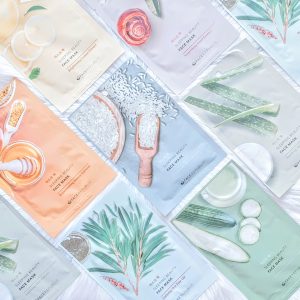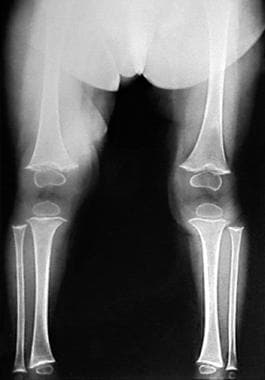Laneige Vitamin C Effector
For the first few years of my skincare journey with South Korean beauty products, I have learned several ways to boost the effect of brightening skincare products that I was using to give my skin somewhat faster results but the initial concept is actually to give way for the rest of the products to be well-absorbed into skin by removing the dead skin cells rather gently.
Unlike recent years, there were not much of choice when it comes to exfoliating skincare products as it was either using physical exfoliators like scrubs and peeling gels or first treatment essences filled with fermented extracts, witch hazel extracts, black sugar extracts; basically ingredients that can help making skin even smoother. In today's market, we have acid-containing treatment products like exfoliating toners and high-percentage of Alpha-Hydroxy-Acid (AHA), Beta Hydroxy-Acid (BHA) even Poly-Hydroxy-Acid (PHA) essences or serums which are known as chemical exfoliators.
But before deciding on which of these exfoliating products to be incorporated in your skincare routine, you should know the kind of ingredients that your skin can actually tolerate and the intensity of the ingredients itself before buying so today I'm going to share about this antioxidant-filled skincare booster which gives brighter and healthier complexion.

Product Description Vitamin booster with 92.5% super berry extracts that have clarifying effects, giving you a brighter complexion. Contains 92.5% super berry extracts rich in vitamin C
- Anti-oxidizing super berry extracts for skincare. Extracts from acerola cherry and acai berries, super berries with four times' anti-oxidizing effects of Vitamin C, prevent skin from oxidizing to help you achieve a healthier appearance.
- Clean and even brightening care. Clear C, LANEIGE's original essence, contains Melacrusher and super berry extracts, components with 3.5 times' brightening effect when used together for bright, clear skin.
- Water-type booster for fast absorption. The water-type formula is quickly absorbed by skin as it moisturizes. Unlike most water-based essence, the container comes with a pump that makes it easier to dispense.
How to Use:Use the enclosed dual-textured cotton for day and night care. Capacity: 150ml
Malpighia Emarginata (Acerola) Fruit Extract, Euterpe Oleracea Fruit Extract, Propanediol, Alcohol, Niacinamide, Butylene Glycol, Moringa Pterygosperma Seed Extract, Melia Azadirachta Extract, Prunus Mume Fruit Extract, Nasturtium Officinale Extract, Nelumbium Speciosum Flower Extract, Glutathione, Glycerin, Lecithin, Bis-PEG-18 Methyl Ether Dimethyl Silane, Sodium Magnesium Silicate, Adenosine, PEG-60 Hydrogenated Castor Oil, Water, Disodium EDTA, Fragrance
PACKAGING


As you can see, the product comes with its own set of cotton pads housed within the bigger box. There's a short product description at the back of the box itself but this product actually comes with its own information leaflet for your guide and reference. The small Distributor sticker indicates that the product is legally distributed by the brand's Malaysian official distributor,AmorePacific Malaysia Sdn Bhd. Period After Opening is12 Monthshowever it's better to finish the product as soon as you can once it's opened as my concern is that the product might have gone oxidised which I personally don't know for sure because the longest I take to finish the product is just 4 months.


There is infographic printed at the back of the cotton pad box for you to follow on how to gently drag the cotton pad across the facial area according to skin concerns. During the day, I'd pour the product onto the wave-patterned side of the cotton pad to smooth out my skin while at night, I'd use the smooth side of the pad and tap my facial area gently with it.


The product comes in that pretty, transparent pink glass bottle and again, there's English simple product description printed at the back of the bottle with the product expiry date printed at the bottom. The format is YYYYMMDD (Year-Month-Day).


The product comes with a lovely pump that dispenses sufficient amount of product that I need which is usually 3 to 4 pumps. Now, there's indicator at the side of the bottle that supposedly marks product usage on daily basis so it is assumed that the product needs to be finished within30 daysor so.
APPLICATION


The product comes in very watery texture so it is recommended that it is to be used by pouring it onto cotton pads and swipe the pad along the facial area, from inner to outer area of the face. Evidently, the product does help with removing my dead skin cells.
THOUGHTS

When it comes to exfoliating dead skin cells off my face these days, I'd prefer to use chemical exfoliators; Glycolic Acid (AHA)-containing exfoliating toner like 2 to 3 times a week depending on my skin condition at the time and I'm using first treatment essence like this as the first product to apply right after cleansing in between those days.
It has such a lovely watery texture that I canuse it on daily basis and there are times when I actually finished a single bottle within merely a month or so but as I do alternate this product with other products with similar functions, I usually finish 3 to 4 bottles within a year.
I never exfoliate my skin when I'm having sensitive skin days or just having bad reactions due to testing new skincare products but I'm glad I still can use this I'd refer to as first treatment essence now by just applying it directly onto skin without cotton pads because even cotton pads can cause irritation sometimes.I'd be tapping my fingers gently on my face until the essence is well absorbed into skin before applying the rest of my skincare products.

I still do love this product very much even after all these yearsas it helps with maintaining my overall skin health, complexionand makes my skin feeling smoother and softer right after every application.
I love that I can incorporate this product easily into my skincare routine especially a routine that mainly focuses on brightening the skin as I have used brightening skincare line from the brand, White Plus Renew for several rounds and I have definitely seen better result compared to when I didn't have this booster in my first round of it.
Talk about ingredients in this product, I'd like to highlight that this product does contains Alcohol however it doesn't make my skin feeling drier or anything but I always have hydrating toners, essences, serums even ampoules in my routine as I cannot afford not to have humectants, emollients and occlusives to seal all the moisture in the layers of skin so I definitely suggest for you to avoid alcohol-containing skincare products if you have dry skin.
If there's one thing that I don't like about the product is the fact that the bottle is made from glass which has broken once before as my hand slipped off the bottle but again, it's so pretty so I guess I'll just have to be very careful all the time.
SHOP THE PRODUCT


Review
April 1, 2021 No Comments

Review
March 26, 2021 No Comments

Review
March 25, 2021 No Comments
Source: https://blog.hermo.my/2019/12/09/laneige-clear-c-advanced-effector-ex/






























